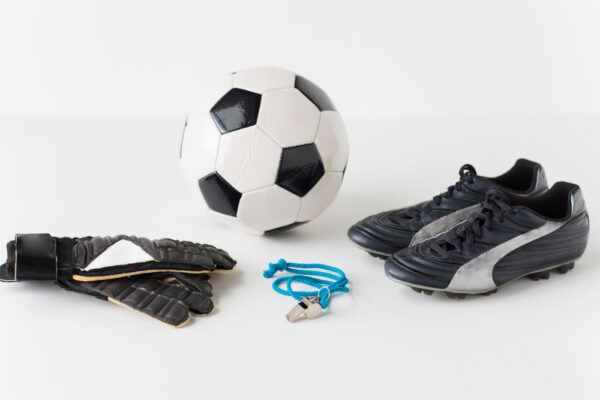Medieval leather armor is one of the most enduring symbols of historical warfare, fantasy storytelling, and modern-day reenactment culture. Whether you’re a LARP enthusiast, a cosplayer, or a history buff, leather armor offers a practical, stylish, and historically inspired alternative to heavier metal gear. With its deep roots in medieval history and modern applications in cosplay and live-action roleplay, leather armor continues to fascinate and function across centuries.
In this guide, we’ll dive into the origins, construction, types, cultural significance, and modern-day uses of medieval leather armor. You’ll also learn how to choose the right leather armor for your needs—whether for reenactments, fantasy costumes, or personal collections.
The Origins of Medieval Leather Armor
Early Use in Ancient and Medieval Warfare
Leather armor predates the medieval era by centuries. In early human civilizations, hardened animal hides were the first lines of defense before metallurgy evolved. From the Roman Empire to the warriors of ancient Persia, leather armor offered flexibility and a degree of protection that made it an essential part of military outfitting.
By the medieval period (5th to 15th centuries), leather armor became more refined and was often used by archers, light cavalry, and foot soldiers who needed speed and agility more than brute defense.
Why Leather?
Lightweight: Easier to wear for long periods
Affordable: Compared to metal armors like chainmail or plate
Flexible: Allowed better mobility during combat
Customizable: Could be dyed, shaped, and carved for identification or intimidation
Types of Medieval Leather Armor
Leather armor wasn’t a one-size-fits-all concept. Different types served different tactical and social purposes:
1. Leather Brigandine
A hybrid armor with metal plates riveted between layers of leather. This was used to provide both flexibility and stronger protection, often worn by knights and higher-ranking soldiers.
2. Cuirass (Breastplate & Backplate)
Crafted from thick, hardened leather and molded to the torso. This design protected vital organs while still being lighter than metal breastplates.
3. Leather Pauldrons and Spaulders
Shoulder guards made of hardened leather to protect from sword strikes or projectiles, particularly useful in close combat.
4. Greaves and Bracers
Leather pieces worn on the legs and forearms. These were essential for soldiers fighting on foot or horseback.
5. Leather Helmets
Though less protective than metal helms, they were popular among archers and scouts for the added visibility and comfort.
Leather Armor Craftsmanship
The quality and effectiveness of leather armor depend heavily on the craftsmanship techniques used:
Tanning and Hardening
Vegetable Tanning: Traditional method using tree bark and plant oils; creates firm yet pliable leather.
Boiled Leather (Cuir Bouilli): Soaking and boiling leather in wax or oils to harden it—a method used to make protective and ornamental armor.
Tooling and Decoration
Leather could be embossed, carved, dyed, or etched with insignias, clan markings, or decorative symbols. This made armor not just protective but also symbolic.
Stitching and Riveting
Durable waxed threads and brass rivets were often used to join multiple leather pieces together, offering layered protection and modular flexibility.
Historical Context and Who Wore Leather Armor
Leather armor was commonly worn by:
Archers and Crossbowmen: Needed the freedom of movement
Scouts and Messengers: Relied on stealth and speed
Mercenaries: Could not afford expensive steel armor
Peasant Militias: Used improvised leather and padded cloth armor
In feudal societies, armor often represented rank and wealth. Leather armor provided a more democratic access to protection, especially during large-scale conflicts like the Hundred Years’ War and Crusades.
Leather Armor in Fantasy & Pop Culture
Today, leather armor enjoys immense popularity thanks to its representation in fantasy media:
The Witcher (Geralt’s iconic black leather armor)
Game of Thrones
Dungeons & Dragons
Lord of the Rings
Fantasy characters often favor leather for its sleek, tactical appearance—making it a go-to costume choice in cosplay, LARP, and Renaissance fairs.
Leather Armor for Cosplay and LARP
Modern-day reenactors and cosplayers choose leather armor for both its authenticity and comfort. Here’s why it’s ideal:
Advantages:
Easy to wear for long conventions or battles
Can be custom-fitted and shaped to body
Offers high realism without weight fatigue
Ideal for medieval, dark fantasy, or post-apocalyptic themes
Popular Characters for Leather Armor Cosplay:
Dark Elves and Rangers
Stealth Assassins
Medieval Knights or Mercenaries
Post-Apocalyptic Raiders
Viking Warriors
How to Choose the Right Medieval Leather Armor
Selecting the right leather armor depends on your purpose, budget, and style preferences. Here are some key tips:
1. Determine Your Purpose
Reenactment: Focus on historical accuracy
Cosplay: Choose stylized and character-specific designs
LARP: Balance mobility with protection
2. Fit and Comfort
Look for adjustable straps and padding. Armor that fits poorly will cause chafing and discomfort.
3. Quality of Leather
Full-grain or top-grain leather is best
Avoid faux leather if you want durability and realism
4. Craftsmanship
Handcrafted armor often lasts longer and offers superior aesthetics. Machine-pressed pieces may be more affordable but lack personality.
Caring for Your Leather Armor
Proper maintenance is essential for preserving your armor:
Clean regularly with a damp cloth (no harsh soaps)
Condition using natural oils or beeswax to prevent drying and cracking
Store properly in a cool, dry place
Avoid long exposure to direct sunlight or moisture
Where to Buy Authentic Medieval Leather Armor
When shopping for quality leather armor, ensure the supplier offers:
Custom sizing
Authentic craftsmanship
Quality materials
Positive customer reviews
👉 If you’re looking for handcrafted and customizable leather armor inspired by medieval and fantasy styles, CreedLeather.com offers a collection made by skilled artisans. Their suits combine historical inspiration with modern design to meet the needs of LARP players, cosplayers, and collectors alike.
Final Thoughts
Medieval leather armor is more than just costume—it’s a symbol of survival, style, and strength. From ancient battlefields to modern fantasy roleplay, leather armor continues to serve warriors—real and imagined—with timeless reliability.
Whether you’re gearing up for a Renaissance fair, designing a fantasy costume, or just fascinated by medieval history, investing in quality leather armor adds both authenticity and artistry to your journey.
Want to explore more historical and fantasy armor designs?
Check out CreedLeather.com for handcrafted leather armor perfect for LARP, cosplay, and medieval reenactment.





Leave a Reply
You must be logged in to post a comment.